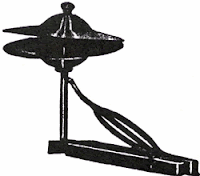Syncopation started with a style of music called ragtime. Ragtime was the most popular from the end of the 1800's to about 1918. Ragtime was in part created by black musicians using African rhythms while playing mainly the piano. Drummers had a fairly limited role in ragtime music, but they did begin to syncopate more, and the beginnings of the jazz ride cymbal pattern was emerging. One drummer who was instrumental during this time was Warren "Baby" Dodds. He created an inverted (inversion of the modern jazz cymbal pattern) pattern that was used a lot at that time. Listen here: http://en.wikipedia.org/wiki/File:Inverted_ride_pattern.ogg
The next era in jazz drumming was the swing/big band era of the 1930's and 40's. During this time, less emphasis was placed on syncopation, because the purpose of these bands was to make people dance! You will hear a lot of emphasis put on beats 2 and 4 in this music. Listen to this example (Jumpin' at the Woodside by Count Basie) and see if you can feel the beat: http://en.wikipedia.org/wiki/File:Jumpin%27_At_The_Woodside.ogg
Next week will be the last post on drumming, where we will explore bebop and beyond. This is when things get really syncopated. Until then, play some music, and if you don't know how, go to Earthtone School of Music's website and take some lessons: http://www.earthtonemusic.org/
Tim Kurteff-Schatz





